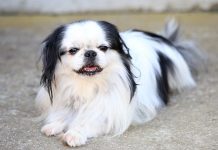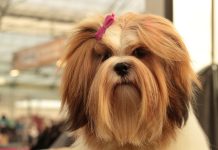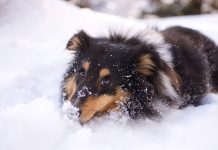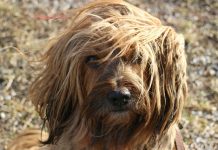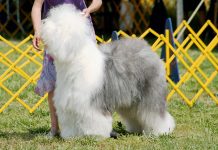History and Origins of the Dalmatian Breed
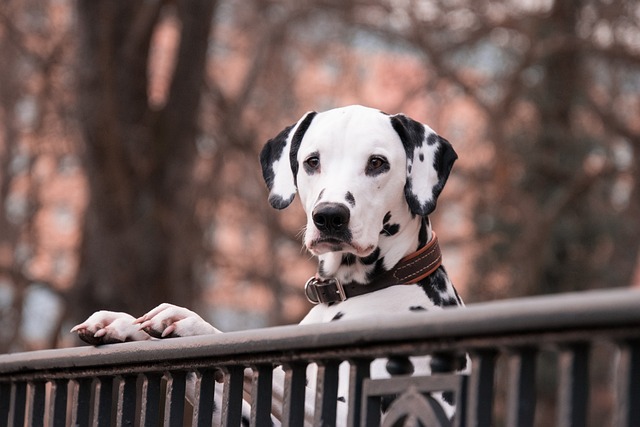
Comprehensive Guide to Dalmatian Dogs:The Dalmatian is a distinctive and well-known breed recognized for its unique spotted coat and elegant appearance. The history of Dalmatians is fascinating and diverse, with origins dating back centuries. Here’s an overview of the history and origins of the Dalmatian breed:
- Ancient Roots: The exact origins of Dalmatians are somewhat unclear, but they are believed to have ancient roots. Artwork depicting spotted dogs resembling Dalmatians has been found in Egyptian tombs dating back to around 2000 BC, suggesting that similar-looking dogs existed in ancient times.
- Historic Roles: Dalmatians gained popularity and recognition in the historic region of Dalmatia (modern-day Croatia), where they were used as carriage dogs, guard dogs, and hunting companions. The breed’s distinctive appearance and versatile skills made them valuable to various roles.
- Carriage Dogs: One of the most famous historical roles of Dalmatians was serving as carriage dogs. They were highly prized for trotting alongside horse-drawn carriages and guarding the horses and carriage when stationary. Dalmatians became synonymous with horse-drawn vehicles, including fire engines, due to their association with early firefighting crews.
- Breed Standard: The modern Dalmatian breed standard was developed in the 19th century in England, where the breed gained popularity among aristocrats and nobility. The Kennel Club in England officially recognized the Dalmatian breed in 1888.
- Firehouse Dogs: Dalmatians are famously associated with firehouses due to their historical role as firehouse dogs. They would run alongside horse-drawn fire engines to clear the path and guard the equipment. This tradition has contributed to the enduring image of Dalmatians as firehouse mascots.
- Pop Culture Icon: Dalmatians gained widespread popularity in modern times due to their appearance in literature, films, and media. The novel “The Hundred and One Dalmatians” by Dodie Smith, later adapted into animated and live-action films by Disney, further solidified the breed’s fame.
Physical Characteristics and Appearance of Dalmatians
Dalmatians are easily recognizable due to their distinctively spotted coat and elegant physique. Here are the key physical characteristics and appearance traits of Dalmatians:
- Spotted Coat: Dalmatians are known for their short, dense coat that is uniformly covered in black or liver (brown) spots. The spots are well-defined and can vary in size and distribution, giving each dog a unique appearance.
- Medium-Sized Build: Dalmatians have a muscular and well-proportioned body with a deep chest and strong limbs. They are medium-sized dogs, with males typically standing between 22 to 24 inches (56 to 61 cm) tall at the shoulder, and females slightly smaller at 20 to 22 inches (51 to 56 cm).
- Elegant and Athletic: Dalmatians have a sleek and athletic build, reflecting their history as carriage dogs and runners. They are agile, capable of sustained endurance, and move with a smooth, effortless gait.
- Head and Expression: The head of a Dalmatian is proportionate to its body, with a flat skull and moderate stop. The eyes are round, dark or amber in color, and have an alert and intelligent expression. The ears are set high, taper to a rounded point, and fold forward.
- Tail: Dalmatians have a moderately long tail that tapers and is carried with a slight upward curve. The tail is never curled or carried over the back.
- Color Variations: While black-spotted Dalmatians are the most common, liver-spotted (brown) Dalmatians also exist. Some Dalmatians may have a combination of both black and liver spots.
- Cleanliness and Grooming: Dalmatians have a short, easy-to-maintain coat that sheds year-round. Regular brushing and occasional baths help keep the coat clean and minimize shedding.
Dalmatians are known for their friendly and outgoing temperament, intelligence, and high energy levels. They thrive in active households and enjoy participating in various activities, including running, agility, obedience, and outdoor adventures. Proper training, socialization, and regular exercise are essential for ensuring the well-being and happiness of Dalmatians in domestic settings.
Dalmatian Temperament and Personality Traits
Dalmatians are known for their distinctive appearance, but they are also recognized for their unique temperament and personality traits. Understanding the characteristics of Dalmatians is important for providing proper care, training, and socialization. Here are the key temperament and personality traits of Dalmatians:
- Energetic and Active:
- Dalmatians are highly energetic dogs that require regular exercise and mental stimulation. They have a lot of stamina and enjoy engaging in activities such as running, hiking, and playing fetch. Daily exercise is essential to prevent boredom and channel their energy positively.
- Intelligent and Alert:
- Dalmatians are intelligent dogs with keen observational skills. They are alert and aware of their surroundings, making them good watchdogs. Their intelligence requires mental stimulation through training and interactive games.
- Friendly and Social:
- Dalmatians are generally friendly and sociable dogs that enjoy being part of the family. They form strong bonds with their owners and are affectionate towards children and other pets when properly socialized from an early age.
- Independent Thinkers:
- Dalmatians have an independent streak and can be strong-willed. They may exhibit stubbornness at times, especially during training. Consistent and positive training methods are important to establish boundaries and reinforce desired behaviors.
- Playful and Lively:
- Dalmatians retain their playful and puppy-like demeanor well into adulthood. They enjoy interactive playtime with their owners and thrive on companionship and attention.
- Sensitive:
- Dalmatians are sensitive dogs that respond well to positive reinforcement and gentle training methods. Harsh or negative training techniques can cause them to become fearful or anxious.
- Good Family Dogs:
- Dalmatians make excellent family dogs when raised with proper training and socialization. They are loyal and protective of their families and enjoy participating in family activities.
- Herding Instincts:
- Some Dalmatians may exhibit herding instincts, such as nipping or chasing, especially with children or other pets. Early training and socialization can help manage these behaviors.
Training and Socialization Needs for Dalmatians
Training and socialization are crucial for shaping the behavior and temperament of Dalmatians. Proper training helps channel their energy and intelligence into positive behaviors. Here are important considerations for training and socializing Dalmatians:
- Early Socialization:
- Start socializing your Dalmatian puppy early to expose them to different people, pets, and environments. This helps prevent shyness or fearfulness and promotes confident and well-rounded behavior.
- Basic Obedience Training:
- Focus on basic obedience commands such as sit, stay, come, and heel. Consistent training sessions with positive reinforcement are effective for teaching Dalmatians new skills.
- Positive Reinforcement:
- Use positive reinforcement techniques such as treats, praise, and play to motivate and reward desired behaviors. Dalmatians respond well to rewards and enjoy the challenge of learning new commands and tricks.
- Consistent Exercise Routine:
- Dalmatians require regular exercise to expend energy and prevent boredom. Engage in daily activities such as brisk walks, jogging, hiking, and interactive play sessions.
- Channel Energy Appropriately:
- Provide mental stimulation through puzzle toys, interactive games, and obedience training to keep your Dalmatian mentally engaged and prevent destructive behaviors.
- Patience and Consistency:
- Dalmatians can be stubborn at times, so patience and consistency in training are key. Avoid harsh or punitive methods, as they can undermine trust and cause behavioral issues.
- Supervised Interactions:
- Supervise interactions with children and other pets to prevent herding or chasing behaviors. Teach children how to interact gently and respectfully with the Dalmatian.
By investing time and effort into training and socialization, you can help your Dalmatian develop into a well-behaved and well-adjusted companion. Dalmatians thrive in active households where they receive plenty of exercise, mental stimulation, and positive reinforcement. Their friendly and playful nature makes them wonderful companions for families and individuals who can provide the attention and care they need to thrive.
Health Considerations and Common Issues in Dalmatians
Dalmatians are generally healthy dogs with a lifespan of around 11 to 13 years, but like all breeds, they may be prone to certain genetic or health-related issues. Being aware of these potential concerns can help you provide the best care for your Dalmatian. Here are common health considerations and issues in Dalmatians:
- Urinary Tract Health:
- Dalmatians are prone to urinary tract issues, including urinary stones (uroliths) and urinary blockages due to uric acid buildup. This condition, known as hyperuricosuria, can lead to urinary tract infections and kidney damage. Feeding a balanced diet and ensuring sufficient water intake are important for urinary health.
- Deafness:
- Dalmatians are susceptible to congenital deafness, which can affect one or both ears. Deafness is often linked to the breed’s unique coat color genetics. Dalmatian puppies should undergo hearing tests, and responsible breeders screen for deafness in breeding pairs.
- Skin Allergies:
- Some Dalmatians may develop skin allergies, which can manifest as itching, redness, and skin irritation. Allergies may be triggered by environmental factors, food sensitivities, or flea bites. Regular grooming and veterinary care can help manage skin issues.
- Hip Dysplasia:
- Hip dysplasia, a developmental condition of the hip joint, can occur in Dalmatians. This condition can lead to arthritis and lameness. Responsible breeding practices and maintaining a healthy weight can help reduce the risk of hip dysplasia.
- Eye Conditions:
- Dalmatians may be prone to certain eye conditions, including cataracts, progressive retinal atrophy (PRA), and eyelid abnormalities (such as entropion or ectropion). Regular eye examinations by a veterinary ophthalmologist are important for early detection and management of eye issues.
- Hypothyroidism:
- Hypothyroidism, a deficiency of thyroid hormone production, can occur in Dalmatians. Symptoms may include weight gain, lethargy, and skin problems. Thyroid hormone replacement therapy is typically used to manage hypothyroidism.
- Bloat (Gastric Dilatation-Volvulus):
- Dalmatians, like many deep-chested breeds, are at risk for bloat, a potentially life-threatening condition where the stomach fills with gas and twists. Feeding multiple smaller meals throughout the day and avoiding vigorous exercise after meals can help reduce the risk of bloat.
- Epilepsy:
- Some Dalmatians may be prone to epilepsy, a neurological disorder characterized by recurrent seizures. Medication can help manage seizures in affected dogs.
Living with a Dalmatian: Suitable Environments and Lifestyle Considerations
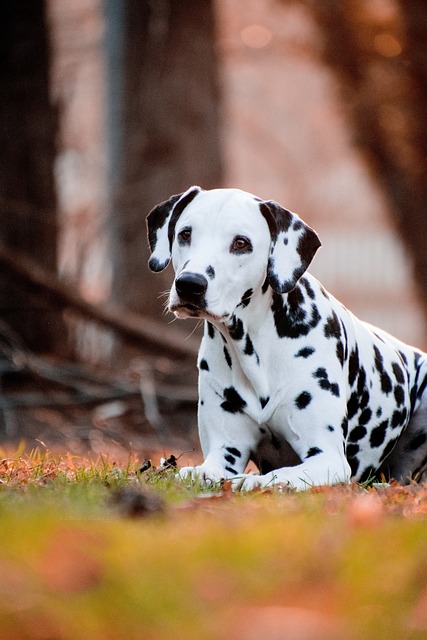
Dalmatians are active, social, and intelligent dogs that thrive in environments where they receive plenty of exercise, mental stimulation, and companionship. Here are considerations for living with a Dalmatian:
- Regular Exercise:
- Dalmatians require regular exercise to stay healthy and happy. Aim for at least 1-2 hours of physical activity daily, including brisk walks, jogging, playtime, and interactive games.
- Mental Stimulation:
- Provide mental enrichment through training sessions, puzzle toys, and interactive games. Dalmatians are intelligent dogs that enjoy learning new skills and solving challenges.
- Socialization:
- Socialize your Dalmatian from an early age to ensure they are well-adjusted and confident around people, pets, and different environments. Expose them to various experiences to prevent shyness or fearfulness.
- Grooming and Coat Care:
- Dalmatians have short, dense coats that shed year-round. Regular brushing helps minimize shedding and keeps the coat clean. Pay attention to skin health and address any allergies or skin issues promptly.
- Nutrition and Weight Management:
- Feed a balanced diet suitable for Dalmatians to maintain a healthy weight and prevent urinary issues. Avoid foods high in purines, which can contribute to uric acid formation.
- Regular Veterinary Care:
- Schedule routine veterinary check-ups, vaccinations, and preventive care to monitor your Dalmatian’s health and detect any potential issues early. Discuss breed-specific health concerns with your veterinarian.
- Positive Reinforcement Training:
- Use positive reinforcement techniques to train and engage your Dalmatian. Reward desired behaviors with treats, praise, and play to motivate and reinforce good manners.
- Supervise Interactions:
- Dalmatians are generally good with children and other pets when properly socialized, but supervision is important to prevent herding or chasing behaviors. Teach children how to interact respectfully with the dog.
By providing a stimulating environment, proper care, and attention to their specific health needs, Dalmatians can thrive as active and loving companions. They are best suited for households that can accommodate their exercise requirements and provide ongoing training and socialization. With proper care and attention, Dalmatians can be wonderful family pets and loyal companions.
Dalmatian Variations and Breeding Practices
Dalmatians are a distinctive breed known for their striking spotted coat and unique appearance. While they are recognized for their classic black or liver (brown) spots on a white background, variations within the breed can occur based on breeding practices and genetics. Here’s an overview of Dalmatian variations and responsible breeding practices:
Dalmatian Variations:
- Coat Color and Pattern:
- The most recognizable variation in Dalmatians is their coat color and pattern. Dalmatians typically have either black spots or liver (brown) spots on a white coat. The size, shape, and distribution of spots can vary, giving each dog a unique appearance.
- Eye Color:
- Dalmatians typically have dark brown or amber eyes that complement their coat color. Some Dalmatians may have heterochromia (two different-colored eyes) or blue eyes, although blue eyes are not common in the breed and are often associated with deafness.
- Size and Build:
- Dalmatians are medium-sized dogs with a lean and athletic build. Variations in size and body structure can occur based on genetics and breeding practices. Responsible breeders aim to produce Dalmatians that conform to the breed standard in terms of size, proportion, and physical characteristics.
- Health and Genetic Factors:
- Responsible breeding practices focus on minimizing genetic health issues in Dalmatians, such as deafness and urinary tract problems. Breeders conduct health screenings and genetic testing to identify potential risks and make informed breeding decisions.
Responsible Breeding Practices for Dalmatians:
- Health Testing:
- Responsible breeders prioritize the health and well-being of Dalmatians by conducting health screenings for genetic conditions prevalent in the breed. This may include hearing tests, urinalysis for urinary stone formation, and eye examinations.
- Temperament and Behavior:
- Ethical breeders select breeding pairs based on temperament, behavior, and adherence to the breed standard. They aim to produce puppies with stable, confident, and friendly personalities suitable for various roles, including companionship and show.
- Genetic Diversity:
- Maintaining genetic diversity is essential to prevent the spread of inherited health issues within the Dalmatian breed. Responsible breeders carefully select breeding pairs to minimize the risk of passing on genetic disorders and promote overall breed health.
- Conformation to Breed Standard:
- Breeders adhere to the Dalmatian breed standard set by kennel clubs and breed organizations, which outlines specific characteristics and traits. This includes coat color, pattern, size, body proportions, and temperament.
- Ethical Standards:
- Reputable breeders follow ethical breeding practices, including proper care of breeding dogs, transparency about health testing and lineage, and providing support to puppy buyers. They prioritize the welfare of the dogs and advocate for responsible ownership.
- Breeding Goals:
- The primary goal of responsible breeding is to preserve and improve the Dalmatian breed, maintaining the unique qualities and characteristics while promoting overall health, temperament, and appearance.
By following responsible breeding practices and prioritizing health, temperament, and breed integrity, dedicated Dalmatian breeders contribute to the preservation and improvement of this beloved breed. When acquiring a Dalmatian puppy, it’s important to research and choose a reputable breeder who adheres to ethical standards and prioritizes the well-being of the dogs. This ensures that you’ll welcome a healthy and well-adjusted Dalmatian into your family, ready to become a cherished companion and show dog.
50 Best Names with Meanings for Dalmatians
Naming your Dalmatian is a fun and meaningful part of welcoming them into your family. Here’s a list of 50 great names with meanings that might suit your Dalmatian’s unique personality and appearance:
Male Names:
- Apollo – Greek god of the sun and light.
- Jasper – Gemstone known for its spotted patterns.
- Ace – Referring to excellence or top performance.
- Rex – Latin for “king,” reflecting regal qualities.
- Oreo – Inspired by the popular cookie with a black-and-white pattern.
- Dexter – Means “right-hand man” or “skillful.”
- Blaze – Refers to a streak of fire or lightning.
- Cosmo – Greek for “order” or “universe.”
- Rocco – Means “rest,” reflecting a calm disposition.
- Cody – Means “helpful” or “pillow.”
- Marble – Inspired by the intricate patterns of marble stone.
- Spike – Refers to a sharp or pointed object.
- Finn – Means “fair” or “white.”
- Chase – Reflects the breed’s instinct to chase and hunt.
- Milo – Means “soldier” or “merciful.”
- Maximus – Latin for “greatest” or “largest.”
- Ranger – Represents an adventurous and outdoorsy spirit.
- Rocky – Inspired by rugged terrain or rocky landscapes.
- Zeus – Greek god of thunder and sky.
- Toby – Means “God is good.”
Female Names:
- Luna – Latin for “moon,” symbolizing brightness and mystery.
- Stella – Means “star,” reflecting brightness and uniqueness.
- Dottie – Inspired by dots or spots.
- Willow – Represents flexibility and grace.
- Cleo – Short for Cleopatra, meaning “glory of the father.”
- Scout – Reflects the breed’s scouting and exploratory nature.
- Misty – Symbolizes mystery and enchantment.
- Aria – Means “melody” or “air,” reflecting elegance.
- Piper – Refers to a pipe player, symbolizing creativity.
- Ruby – Inspired by the gemstone known for its red color.
- Zara – Means “princess” or “flower.”
- Nova – Latin for “new,” symbolizing brightness and excitement.
- Sasha – Means “defender of mankind.”
- Juno – Roman goddess of marriage and childbirth.
- Lola – Represents grace and femininity.
- Pixie – Refers to a mythical creature known for mischief.
- Maggie – Means “pearl,” symbolizing purity and beauty.
- Nala – Inspired by the lioness character in “The Lion King.”
- Bella – Means “beautiful,” reflecting elegance.
- Zoe – Means “life,” symbolizing vitality.
Gender-neutral names:
- Charlie – Means “free man” or “strong.”
- Sunny – Symbolizes brightness and happiness.
- Coco – Refers to cocoa or coconut, representing sweetness.
- Riley – Means “courageous” or “valiant.”
- Dakota – Native American tribe name, meaning “friend” or “ally.”
- Skye – Refers to the sky, symbolizing freedom and expansiveness.
- Harley – Means “hare’s meadow,” symbolizing playfulness.
- Echo – Means “reverberating sound.”
- Pixel – Represents a small element of a larger picture.
- Quincy – Means “estate of the fifth son.”
Choose a name that resonates with your Dalmatian’s personality, appearance, or the qualities you admire. Whether you prefer a classic, meaningful, or unique name, the right name will be a perfect fit for your beloved Dalmatian companion.
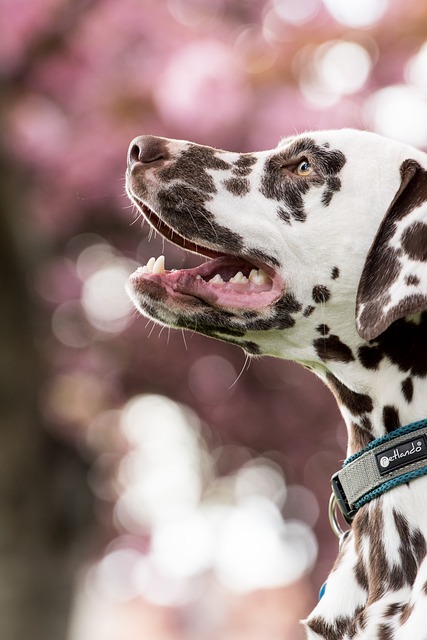
In conclusion, this comprehensive guide to Dalmatian dogs has provided a detailed overview of this distinctive and energetic breed. Throughout our exploration, we’ve delved into the history, distinctive characteristics, and essential care considerations that define Dalmatians. Known for their unique coat pattern, intelligence, and high energy levels, Dalmatians make lively companions for active individuals and families. They excel in activities such as agility, obedience, and even firefighting roles. As you embark on your journey with a Dalmatian, may you appreciate their unique qualities and form a strong bond with this delightful breed, creating lasting companionship and joy together.








